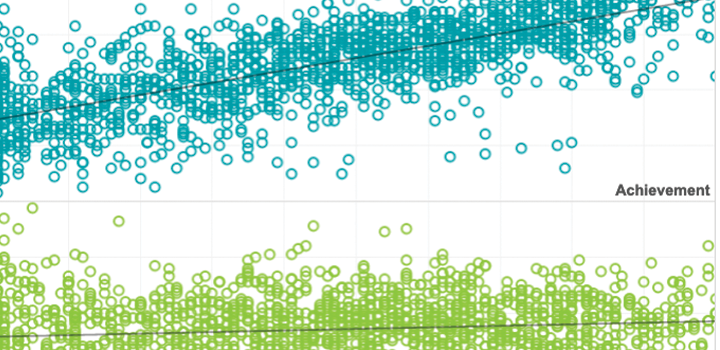

A posterior predictive model checking method assuming posterior normality for item response theory
This study investigated the violation of local independence assumptions within unidimensional item response theory (IRT) models.
By: Megan Kuhfeld
Topics: Growth modeling


Positionality in teaching: Implications for advancing social justice
In order to ask students to be vulnerable in talking about how they have been exposed to, and impacted by, society’s messages about race, gender, and sexual identity, we have a responsibility to first demonstrate that vulnerability ourselves. Thus, our work is more about “being” than “doing.” Modeling honest self-assessment allows us to ask students to be reflective about their relationship to power, privilege, and oppression.
By: Angelica Paz Ortiz, Beth Tarasawa, Jack Straton, Noelle Al-Mustaifry, Anmarie Trimble
Topics: Equity


This study uses an analytic example to explore whether metadata might help illuminate such constructs. Specifically, analyses examine whether the amount of time students spend on test items (after accounting for item difficulty and estimates of true achievement), and difficult items in particular, tell us anything about the student’s academic motivation and self‐efficacy.
By: James Soland
Topics: School & test engagement, Math & STEM, Social-emotional learning


In this study we conducted a literature review to investigate whether assessment metadata (typically data relevant to how students behave on a test or survey) can provide information on SEL constructs. Implications of this new source of SEL data for practice, policy, and research are discussed.
By: James Soland, Gema Zamarro, Albert Cheng, Collin Hitt
Topics: School & test engagement, Innovations in reporting & assessment, Social-emotional learning


Rethinking summer slide: The more you gain, the more you lose
Megan Kuhfeld draws on data from the 3.4 million students who took the NWEA MAP Growth assessments to find that summer slide is common, but not inevitable. According to the data, the students who experienced the greatest loss were those who made the greatest gains during the previous school year.
By: Megan Kuhfeld


A matter of time: variations in high school course-taking by years-as-EL subgroup
This study improves upon previous research by addressing this dimension of heterogeneity and reporting detailed by-subject analyses.
By: Angela Johnson
Topics: Equity, English Language Learners


Validating the SEDA measures of district educational opportunities via a common assessment
his study describes a convergent validity analysis of the SEDA growth estimates in mathematics and English Language Arts (ELA) by comparing the SEDA estimates against estimates derived from NWEA’s MAP Growth assessments.
By: Megan Kuhfeld, Thurston Domina, Paul Hanselman
Topics: Equity, Growth modeling, Measurement & scaling


